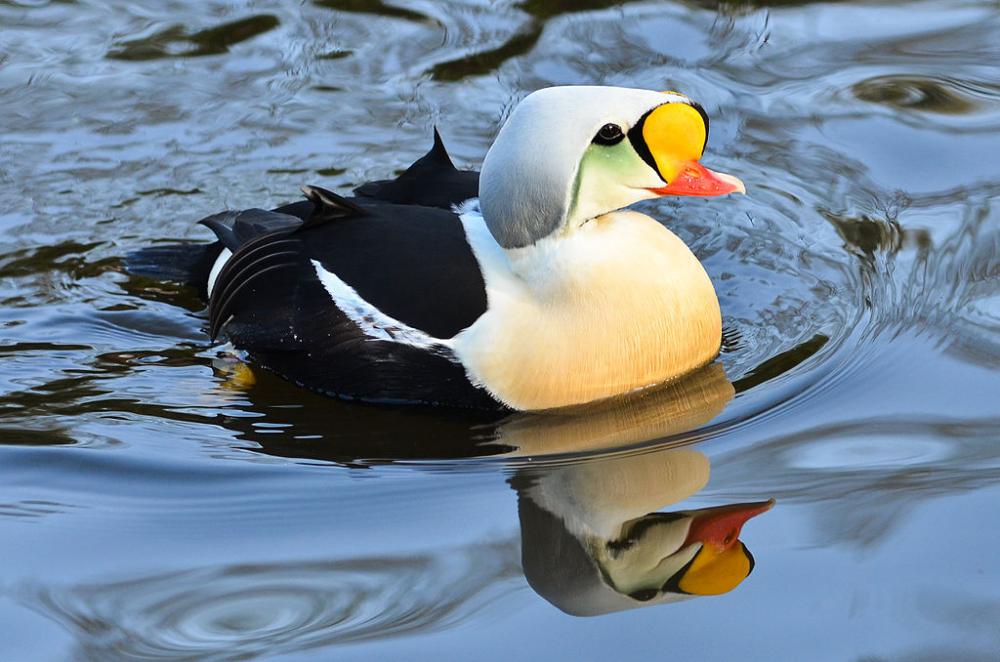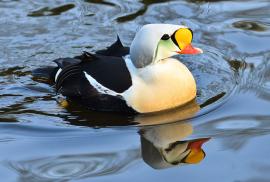Guide to Boreal Birds
Overview
Although the world population of the King Eider is large, the birds are seldom seen in the United States; most winter farther north and favor deeper water than the Common Eider. They often dive far for food and have been caught in nets as much as 150 feet (50 meters) below the surface. Like the Common Eider, they take large numbers of mussels and other shellfish but vary their diet with small fish, squid, sand dollars, and sea urchins. These birds nest in remote regions of the Arctic, where until recently they have suffered little disturbance. The migrations of the King Eider are spectacular, with huge flocks, often consisting entirely of males or of females, traveling in long lines along the coast, heading to or from their breeding or wintering grounds.
Description
18-25" (46-64 cm). A large duck. Similar to the Common Eider, but male has black back, conspicuous orange-yellow bill, and "shield" on forehead. Female similar to female Common Eider, but bill is shorter, not extending as far back toward eye, and lacks the distinctive sloping profile; flanks marked with black crescents, not bars. Usually holds bill more horizontal to surface of water than Common Eider.
Voice
A guttural croaking.
Nesting
4-7 buff-olive eggs in a down-lined depression on rocky tundra, often some distance from the edge of the water.
Habitat
Rocky coasts and islands.
Range/Migration
Breeds in freshwater ponds and lakes in Alaska and Arctic islands of Canada, south locally to Hudson Bay. Winters along coasts south to southern Alaska and from Labrador to New Jersey; rarely farther south and on Great Lakes. Also in Eurasia.



